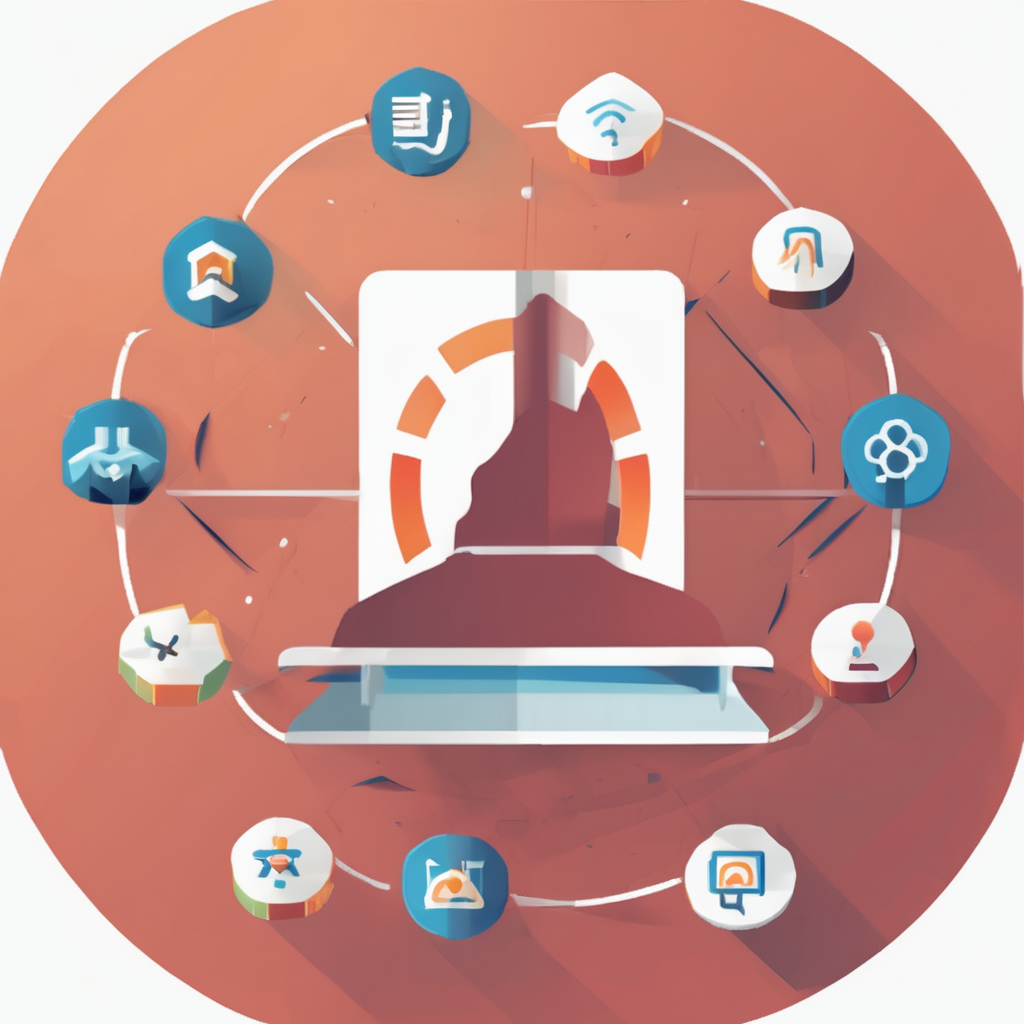Transforming Classroom Management: Innovative Ways UK Schools Can Leverage AI Technology
In the ever-evolving landscape of education, the integration of Artificial Intelligence (AI) is revolutionizing how schools operate, teach, and learn. UK schools, in particular, are at the forefront of this transformation, leveraging AI to enhance classroom management, personalize learning, and improve educational outcomes. Here’s a deep dive into the innovative ways AI is being used and the potential it holds for the future of education.
Streamlining Administrative Tasks
One of the most significant benefits of AI in education is its ability to streamline administrative tasks, freeing up teachers to focus on what they do best: teaching.
Also to see : Revolutionizing waste management: discover how uk cities utilize iot innovations for smarter solutions
Automating Routine Tasks
AI-powered tools can handle a variety of administrative duties, such as:
- Tracking Attendance and Punctuality: AI can automatically log attendance and punctuality, reducing the time teachers spend on these tasks.
- Managing Timetables and Events: AI can assist in scheduling classes, trips, and conferences, ensuring that all logistical aspects are well-organized.
- Handling Communication: AI-driven chatbots can manage routine inquiries from parents and students, providing quick and accurate responses.
- Marking Exams and Assigning Grades: AI can automate the marking process, providing detailed feedback and grades based on predefined criteria.
Generating Resources
AI can also generate educational resources, such as sets of questions, sample answers, and lesson plans. For instance, teachers can use AI to produce a lesson plan tailored to the specific needs and interests of their students. This not only saves time but also ensures that the content is relevant and engaging.
Additional reading : Essential Data Encryption Strategies for Financial Services in the UK: Best Practices for Security
Enhancing Lesson Planning
Lesson planning is a crucial aspect of teaching, and AI is making this process more efficient and effective.
Personalized Lesson Plans
AI can generate lesson plans based on well-known syllabi and adapt them to the specific needs of the students. For example, if a teacher mentions that students struggle with a particular concept or enjoy a certain activity, AI can tweak the lesson plan accordingly.
Addressing Classroom Issues
AI can also help design activities that mitigate common classroom issues. For instance, if a student tends to talk over others, AI can suggest assigning that student the role of a debate moderator or introducing a peer feedback system to foster responsibility and accountability.
Personalised Learning Experiences
Personalised learning is at the heart of AI’s impact on education, allowing students to learn at their own pace and in their preferred style.
Adaptive Learning
AI-driven learning platforms can adapt content to individual students’ learning styles and abilities. Here are some ways this is achieved:
- Content Customization: AI can simplify instructions for students with dyslexia or convert text to speech for those with visual impairments.
- Real-Time Feedback: AI provides immediate feedback on assignments and tests, helping students understand their strengths and weaknesses in real time.
- Learning Paths: AI can create personalized learning paths, ensuring that each student is challenged appropriately and supported where needed.
Increased Reach and Inclusivity
AI tools can support students who find it difficult to attend school due to various reasons. For example:
- Remote Learning: AI can assist students studying from home by providing answers to their questions and offering interactive learning materials.
- Language Support: AI can enhance language learning through apps and digital platforms, particularly beneficial in areas where access to educational resources is limited.
Measuring Success and Avoiding Pitfalls
While AI offers numerous benefits, it is crucial to measure its success and avoid potential pitfalls.
Metrics for Success
To gauge the effectiveness of AI in the classroom, educators can use the following metrics:
- Student Engagement: Monitor how engaged students are with AI-assisted learning materials.
- Learning Outcomes: Track improvements in student performance and learning outcomes.
- Teacher Feedback: Collect feedback from teachers on the ease of use and effectiveness of AI tools.
Potential Pitfalls
Despite the benefits, there are challenges to consider:
- Over-Reliance on AI: Ensure that AI tools do not distract students or encourage bad study habits.
- Digital Divide: Address the issue of unequal access to technology, particularly for students from lower-income households.
- Academic Integrity: Implement measures to prevent students from using AI to cheat on assignments or exams.
Table: Comparing AI Tools in Education
Here is a comparative table highlighting some of the key AI tools and their functionalities:
| Tool | Functionality | Benefits |
|---|---|---|
| ChatGPT | Generates lesson plans, answers questions, provides feedback | Saves time, personalizes learning, enhances student engagement |
| Inspired AI’s Lesson Planner | Generates lessons based on prompts, reduces administrative tasks | Increases teacher-student interaction, improves learning outcomes |
| Cycle Tester | Automates assessment creation, grading, and feedback | Provides personalized feedback, saves time on manual grading |
| Parent Helper | Streamlines communication between parents and schools | Keeps parents informed, reduces response times |
| Google Classroom | Manages learning materials, assignments, and communication | Enhances organization, facilitates real-time feedback |
Empowering Teachers and Educators
The integration of AI in education is not just about the tools; it’s also about empowering teachers and educators to use these tools effectively.
Teacher Education Programs
Teacher Preparation Programs (TPPs) play a critical role in preparing future educators for the AI-augmented classroom. Here are some recommendations:
- Integrate AI Literacy: Include AI topics in teacher education curricula to develop AI literacy and ethical awareness.
- Faculty Development: Invest in faculty development to increase AI readiness among educators.
- Partnerships: Foster partnerships with K-12 schools, technology companies, and other stakeholders to support the effective integration of AI.
Real-Time Data and Feedback
AI provides real-time data and feedback, enabling teachers to adjust their teaching methods and improve student learning experiences.
- Data Analytics: AI-driven data analytics help track student performance and identify areas where students may need additional support.
- Feedback Mechanisms: AI tools can provide immediate feedback on student performance, helping teachers to intervene early and make necessary adjustments.
The Future of Education: Challenges and Opportunities
As AI continues to transform education, there are both challenges and opportunities to consider.
Addressing Ethical Concerns
Educators must address ethical concerns such as the potential for over-reliance on AI, the digital divide, and academic integrity issues.
- Balancing AI Use: Ensure that AI tools add value to lessons without distracting students or undermining traditional teaching methods.
- Investing in Digital Infrastructure: The UK government is investing in digital infrastructure and skills training to ensure equal access to technological advancements.
Preparing for an AI-Augmented World
The future of education will increasingly rely on digital advancements. Here’s how educators can prepare:
- Developing Critical Thinking Skills: AI-literate educators can foster critical thinking skills in students, preparing them for a world where AI is prevalent.
- Fostering AI Literacy: Educators should develop AI literacy in K-12 students from all backgrounds, creating a diverse pipeline of AI professionals.
Practical Insights and Actionable Advice
For educators looking to integrate AI into their classrooms, here are some practical insights and actionable advice:
Start Small
Begin with simple AI tools that can automate routine tasks or provide basic feedback. As you become more comfortable, you can move on to more complex applications.
Collaborate with Colleagues
Share experiences and best practices with other educators. Collaborative efforts can help in identifying the most effective AI tools and strategies.
Monitor and Evaluate
Regularly monitor the impact of AI tools on student learning outcomes and teacher workload. Evaluate the effectiveness of these tools and make necessary adjustments.
Address Concerns Proactively
Be proactive in addressing potential pitfalls such as over-reliance on AI or academic integrity issues. Implement measures to prevent these problems before they arise.
The integration of AI in UK schools is a bold step forward in transforming classroom management and enhancing educational experiences. By leveraging AI tools, educators can save time, personalize learning, and improve student engagement. However, it is crucial to balance the benefits of AI with the potential risks and ensure that these tools are used in a way that supports, rather than undermines, the quality of education.
As Dr. Michelle Selinger, an education expert, notes, “AI is not here to replace teachers but to augment their capabilities. By embracing AI, we can create a more inclusive, efficient, and effective education system that prepares students for the challenges of the future.”
In conclusion, the future of education is undoubtedly digital, and AI is at the forefront of this transformation. By understanding the potential of AI, addressing its challenges, and integrating it thoughtfully into classroom management, UK schools can pave the way for a more innovative, adaptive, and successful educational system.











